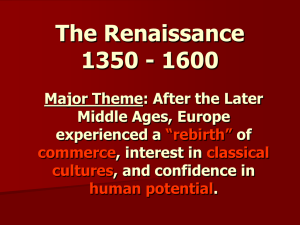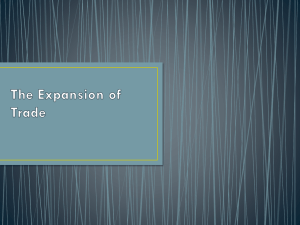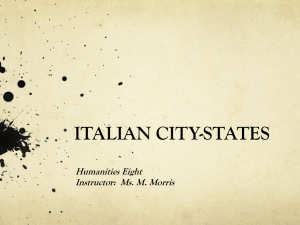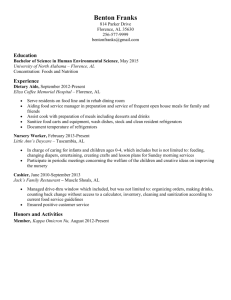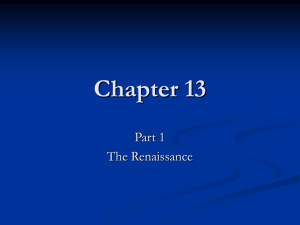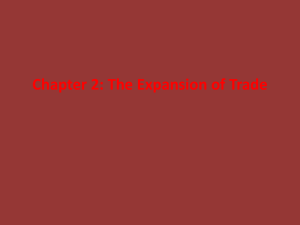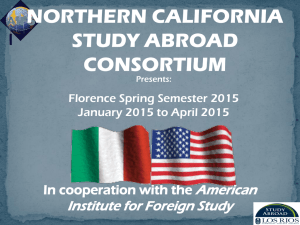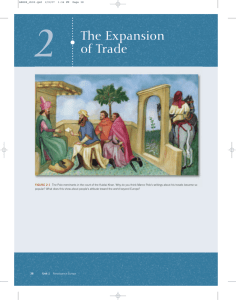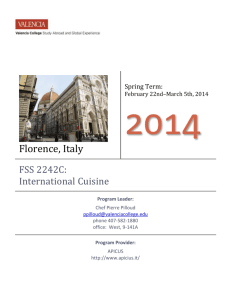Italian City-States: Renaissance Guided Notes
advertisement
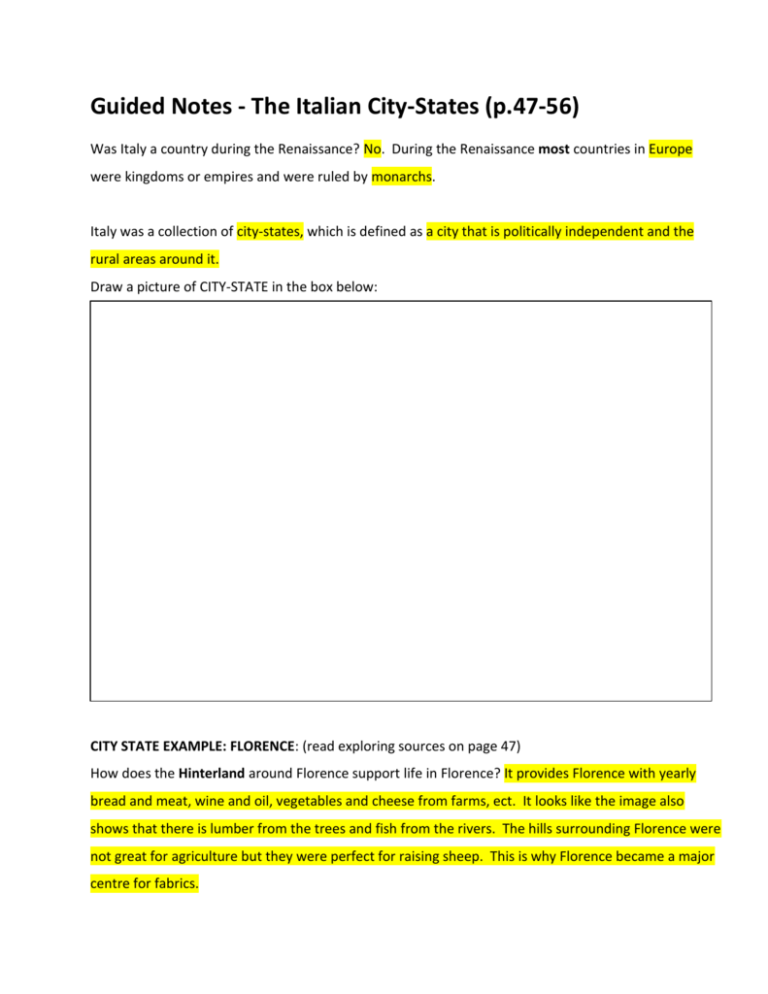
Guided Notes - The Italian City-States (p.47-56) Was Italy a country during the Renaissance? No. During the Renaissance most countries in Europe were kingdoms or empires and were ruled by monarchs. Italy was a collection of city-states, which is defined as a city that is politically independent and the rural areas around it. Draw a picture of CITY-STATE in the box below: CITY STATE EXAMPLE: FLORENCE: (read exploring sources on page 47) How does the Hinterland around Florence support life in Florence? It provides Florence with yearly bread and meat, wine and oil, vegetables and cheese from farms, ect. It looks like the image also shows that there is lumber from the trees and fish from the rivers. The hills surrounding Florence were not great for agriculture but they were perfect for raising sheep. This is why Florence became a major centre for fabrics. What geographic features make Florence a good site for a city? It is situated right on the Arno river with lots of fields and trees in the surrounding areas. It is protected by and surrounded by hills. THE SUCCESS OF THE CITY STATES Geographic features contributed greatly to the economic success of Florence and other city-states. In northern Italy the city-states were in “in the right place at the right time”. FOUR FACTORS THAT HELPED THESE CITY-STATES – Collect JOT notes on each of the following: GEOGRAPHY Italy was the closest to the port cities of northern Africa and the eastern Mediterranean Sea where all those lovely spices and luxury goods were coming from. Sea transportation of goods made for cheaper trade. CLIMATE Italy’s climate is milder than more northern European countries. Trade was therefore not interrupted by frigid winter conditions. The longer growing season also allowed for things like grapes for wine, olives for olive oil and other crops to flourish. LEADERSHIP Northern Italy was a collection of independent city-states not a monarchy. Because of this, they had control over their own affairs such as governments, armies and the like. SOCIAL ORGANIZATION Since Feudalism did not have such a strong hold in Italy as elsewhere in Europe at the time, nobles tended to move into the towns and with their wealth to back them became involved in business and politics as an urban upper class. COMPETITION FOR TRADE Because each city-state wanted to expand their trade there was rivalry between them. For example, Genoa and Venice fought for control of the sea routes in the Mediterranean. Venice was very successful was a great trading centre as a result of its dealings with the East. THINK IT THROUGH FEUDALISM was not as powerful in Italy. The power triangle had begun to break down here. Look at the 7 ELEMENTS of WORLDVIEW below. Explain how the geography of northern Italy affected its economy, and then how this in turn affected the society of the Italian city-states. COMMERCE IN THE CITY-STATES Merchants made money by purchasing goods in one place and then selling them for a higher price in another place. Merchant bought and sold finished goods but they also traded in resources that need to be manufactured into goods. The ciompi were workers who helped to manufacture wool in Florence. They were not part of a guild. When the black death devastated the population many of the ciompi were unemployed and had trouble surviving and even earning enough money for food. They wanted to form a guild in order to help each other but richer, more powerful merchants stopped them, so the ciompi revolted. A Guild is closest to a modern day COMPANY WORKER EXECUTIVE UNION Do you know anyone who is a member of a union? Every teacher at EOJHS is a member of the ATA. What does a union, or a guild, do for its members? According to the text on page 23, Guilds took care of members and their families in case of illness or accident. They also set standards of quality of work as well as standards for working conditions and pay. Unions fight for equality and fairness. Why would the rich merchants try to stop the ciompi from forming a guild? Power redistribution. MAKING MONEY WITH MONEY Bankers, along with merchants brought wealth into their city-states. Florentine banks became so powerful that the coin from Florence, called a florin, became the most important currency in all of Europe. Usury was the practice of charging interest on borrowed money helped to make the banks wealthy. Originally the Church opposed this practice, but as international trade grew the Church changed their position and allowed it. Why did the Church do this? To encourage investment in international trade. How was politics affected by the changing economy? Everyone wanted a piece of the pie. Struggles and warfare interfered with the merchants’ and bankers’ ability to trade and do business, so these wealthy groups began supporting strong leaders who could promise them stability. Florence competed with other city-states in banking. Italian bankers travelled all over Europe on business and this exposed other Europeans to the lifestyle of the Italians who had more contact with the world outside of Europe. What do you think that this will do to the WORLDVIEW of Europe and Europeans? _________________ ____________________________________________________________________________________ ____________________________________________________________________________________ ECONOMICS AND CITIZENSHIP The economy went into a depression in the years after the Black Death. In Italy the slump was not over until the 1500’s. But Merchants and bankers continued to grow wealthier through trade and commerce. According to historian Riobert Sabatino Lopez, wealthy people in this time spent their money on the arts because there were few other good business opportunities around. Wealthy citizens also contributed to the beautification of their cities, which encourage feelings of loyalty and pride in the general public.
